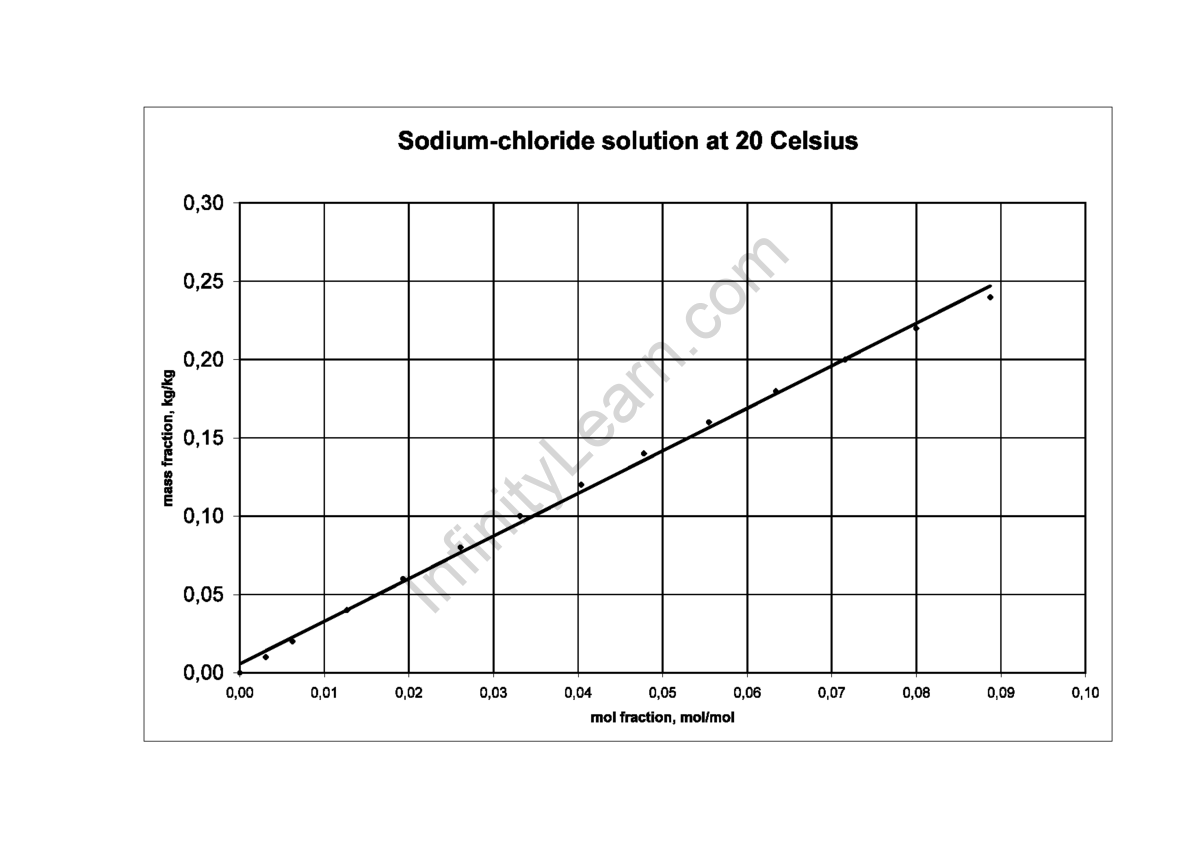





Courses

By Shailendra Singh
|
Updated on 30 Dec 2024, 11:49 IST
There are numerous methods for indicating the concentration of a solution, one of which is the mole fraction. A mole fraction is a concentration unit. The mole fraction, which is symbolized by “Χ,” measures the relative quantity of solute and solvent in the solution.
The mole fraction is defined as the number of moles of a certain component in a solution divided by the total number of moles in the solution.
Consider a solution that contains two compounds A and B; the mole fraction of each substance is as follows:
Solute mole fraction = (Moles of Solute) / (Total number of moles of the solutes and the solvent).
(mol A) / (mol A + mol B) = XA
And
(mol B) / (mol A + mol B) = XB
Points to remember:


The molar mixing ratio is used to describe the mixing of two or more ratios.
The mole fraction only reflects a subset of molecules. Because distinct molecules have different masses, the individual fraction and the mass fraction might differ.
Examples:
Some examples to get through you the concept of mole fraction thoroughly:
Example 1: Calculate the mole fraction of acetone in a solution containing 2 moles of benzene, 3 moles of carbon tetrachloride, and 5 moles of acetone.

Solution: Number of moles of acetone = 5 moles
Number of moles of carbon tetrachloride = 3 moles
Number of moles of benzene = 2 moles
Total number of moles in solution = number of moles in acetone + number of moles in carbon tetrachloride + number of moles in benzene
= 5 moles + 3 moles + 2 moles
= 10 moles
Mole fraction of acetone = (Number of moles in acetone) / (Total number of moles in the solution)
= 5 moles / 10 moles
= 0.5
Mole fraction of cabon tetrachloride = (Number of moles in carbon tetrachloride) / (Total number of moles in the solution)
= 3 moles / 10 moles
= 0.3
Mole fraction of benzene = (Number of moles in benzene) / (Total number of moles in the solution)
= 2 moles / 10 moles
= 0.2
Example 2: 30 grams of ethanol and 30 grams of water are combined to make a solution. Calculate the mole fraction for each component.
Solution: The molecular weight of ethanol is fixed at 46.07 g/mol.
The number of moles of ethanol present in the solution = 30 grams / 46.07 g/mol = 0.651 moles.
The molecular weight of water = 18g/mol.
The number of moles of water present in the solution = 30 grams / 18 g/mol = 1.67 moles
Total number moles = 0.651 + 1.67 = 2.321 moles
Mole fraction of ethanol = 0.651 moles / 2.321 moles = 0.28
Mole fraction of water = 1.67 moles / 2.321 moles = 0.72
Example 3: If 0.010 moles of NaCl is dissolved in 100 grams of clean water, calculate the mole fraction of NaCl and H2O.
Solution: The molecular weight of water = 18.0153 grams per mole.
Number of moles of water = 100 grams / 18.0153 grams = 5.56 moles
Mole fraction of NaCl = 0.100 moles / ( 5.56 moles + 0.10 moles)
= 0.100 moles / 5.66 moles
Mole fraction of NaCl = 0.018
Mole fraction of H₂O = 5.56 moles / 5.66 moles
Mole fraction of H₂O = 0.982
The following are the benefits of mole fraction:
There is only one drawback to mole fraction, and that is that it is inconvenient for liquid solutions.
The following are the attributes of mole fraction:
The number of molecules contained inside one component divided by the overall number of molecules in a particular combination is referred to as the Mole Fraction. When two reactive-natured components are combined, it is highly beneficial. The mole fraction is the ratio of the two components.
Use solved examples to see how this topic has been applied and how to tackle challenges in the exercise wisely.
The mole fraction is defined as the number of molecules (or moles) in a single component divided by the total number of molecules (or moles) in the combination. When two reactive components are combined, the mole fraction is important because the ratio of the two components can be comprehended if the mole fraction of each is known.
Those planning to take engineering and other science-related competitive examinations will need to be familiar with this chapter. If the calculations are understood and implemented correctly, Mole Fraction may be highly rewarding. Going over the solved problems will help students understand how each sum should be approached. They can review Mole Fraction, which is provided on this website, as it will serve as an excellent handbook for them. Students may, in fact, pace themselves and then write down all they have learned from this website. This will boost their writing speed while also revealing how much they have learned.